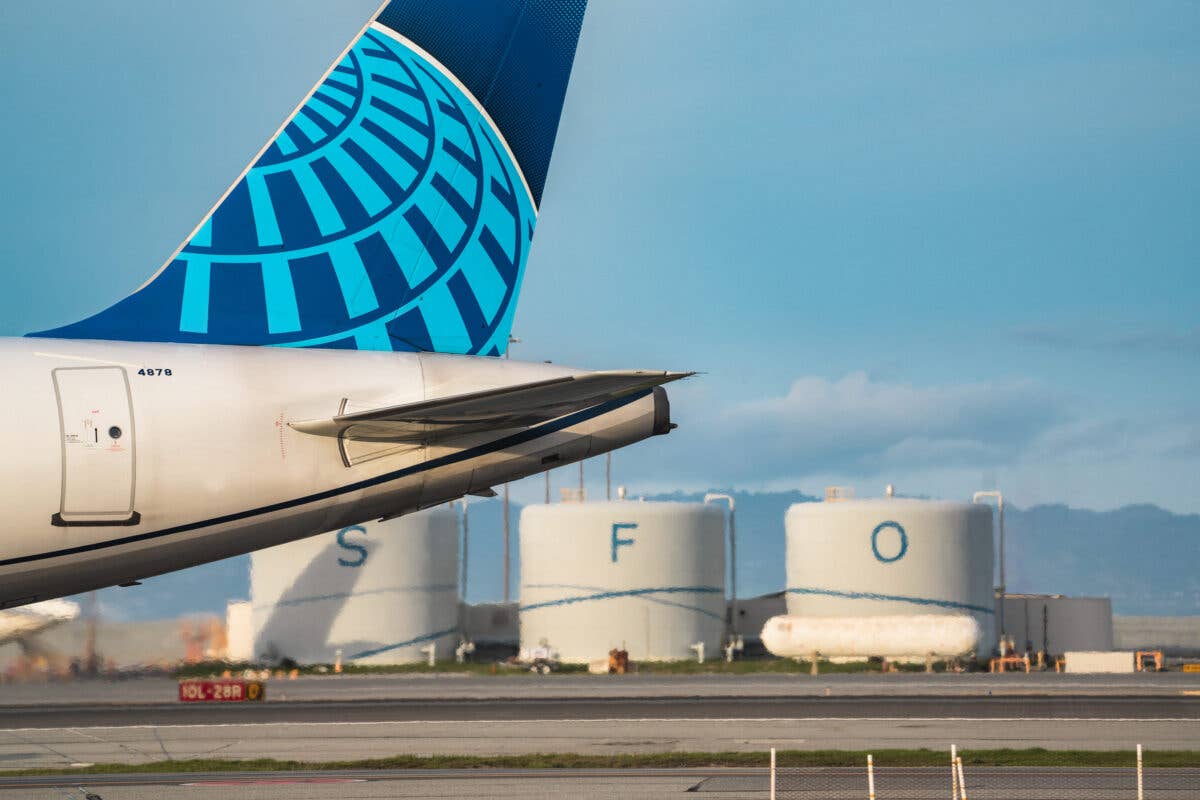United Airlines to Fuel SFO Flights With SAF
The airline is also expanding its use of sustainable aviation fuel to its flights at London Heathrow later this year.

United Airlines is increasing its use of sustainable aviation fuel (SAF) on flights at San Francisco International Airport. [Courtesy: United Airlines]
United Airlines is increasing its use of sustainable aviation fuel (SAF) on flights at San Francisco International Airport (KSFO)—a move that stands to triple the airline's use of SAF for flight operations in the span of a year.
The airline is "on track to use approximately 10 million gallons in 2023, nearly three times more than 2022 and close to 10 times more than 2019," it said in a statement.
The SAF that United is using is provided by Neste sustainable aviation fuel.
SAF is produced from 100 percent renewable resources including used cooking oil and animal fat waste. Use of SAF is designed to reduce greenhouse gas emissions by up to 80 percent of the fuel's life cycle as compared to conventional jet fuel.
According to company officials, United was the first airline to commit to net zero carbon emissions by 2050, without relying on traditional carbon offsets.
"It's remarkable to see that in just a few years United has exponentially increased its SAF use," said United chief sustainability officer Lauren Riley. "While 10 million gallons of SAF in 2023 represents a fraction of what we need, we have also made big investments in producers that are using everything from ethanol to algae, to CO2, to help increase our available future supply.
"We believe these investments, along with our continued collaboration with policymakers, cross-industry businesses, and other airlines will help us scale this brand-new industry to achieve comparable success to solar and wind," Riley added.
Industry officials note that in the future household trash, forest waste, and other feedstocks may be used to create SAF.
According to a United spokesperson, the airline runs 216 flights per day out of SFO, adding that in addition to being better for the environment, the use of SAF provides economic incentive for the airline as the California Low Carbon Fuel Standard provides credits for low-carbon fuels.
The credits fluctuate in value, but are roughly $1 per gallon as of May 4.
To date, United has invested in the production of over five billion gallons of SAF. The deliveries of sustainable fuel began at San Francisco International in April of 2023, with United receiving 1.5 million gallons. The remainder of the carrier's SAF supply will be used at Los Angeles International Airport (KLAX), which has been utilizing SAF since 2016, and Amsterdam's Schiphol Airport (EHAM), which has been using SAF since 2022.
In addition, United expects to begin utilizing SAF at London Heathrow Airport (EGLL) later this year, allowing United to participate in the airport's SAF incentive program.
Eco-Skies Alliance Round 3
The SAF used on United's flights is being paid for in part through the company's Eco-Skies Alliance, an innovative program designed for participating companies to work together to share the "green premium," or the cost associated with purchasing lower emission fuels.
United's Eco-Skies Alliance was launched in 2021, and it provides its corporate customers with the opportunity to build transparency and enable true, certified SAF emissions reductions associated with travel of people or goods on United flights.
The company noted that United's Eco-Skies Alliance "has collectively contributed toward the purchase of nearly 15 million gallons of SAF. With its up-to-80-percent greenhouse gas (GHG) emissions reductions on a lifecycle basis compared to conventional jet fuel, this is enough SAF to reduce approximately 150,000 metric tons of GHG emissions, or enough to fly passengers close to 1 billion miles."
Including today's newly announced participants, the program has 24 participants including Audi, Bank of America, Cisco, Corporate Travel Management, DB Schendker, First Eagle Investments, Macquarie Group, and Thermo Fisher Scientific.
In addition to the Eco-Skies Alliance Program, United also established a venture fund—United Airlines Ventures—to identify and invest in companies and technologies that can decarbonize air travel through the UAV Sustainable Flight Fund. According to the airline, these strategic investments include carbon capture, hydrogen-electric engines, electric regional aircraft, and air taxis.

Subscribe to Our Newsletter
Get the latest FLYING stories delivered directly to your inbox






